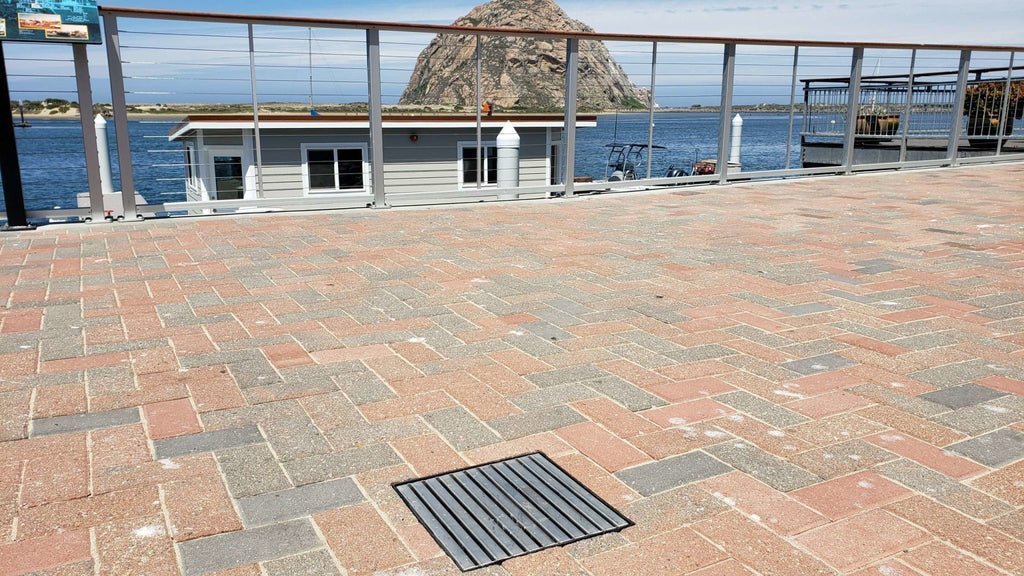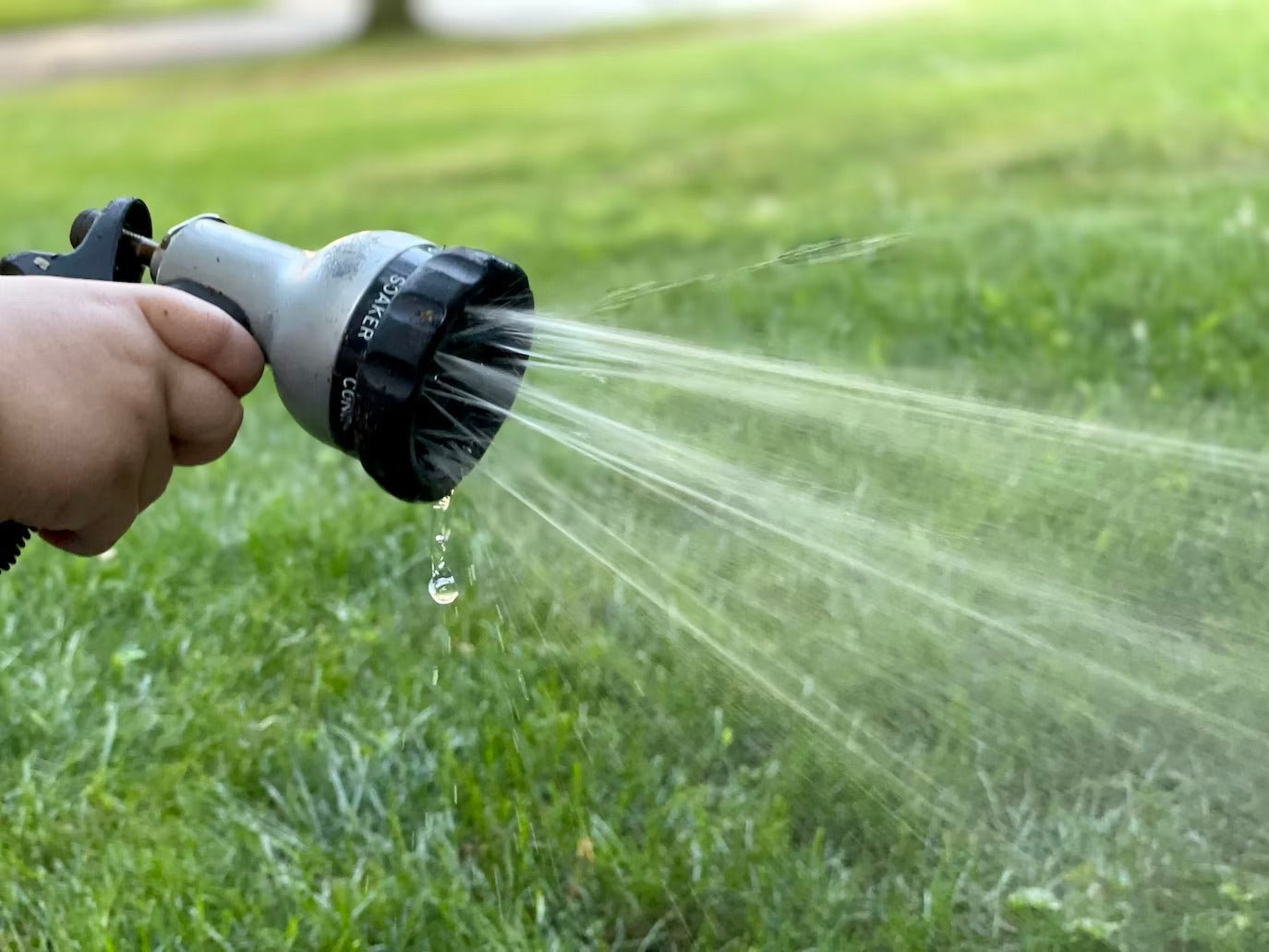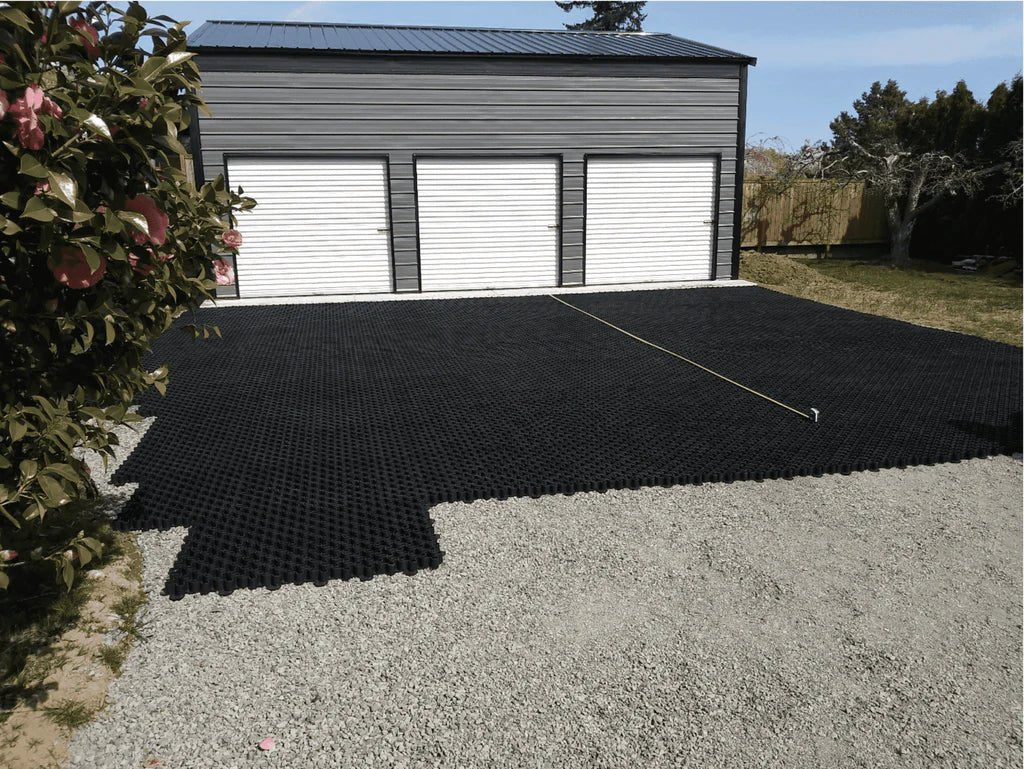Catch basins are a fundamental component of storm drainage systems. They are designed to collect rainwater runoff and prevent standing water. Catch basins are the unsung heroes of plumbing systems, ensuring the steady flow of water. Without them, your property could suffer water-related damage, which can lead to an array of problems.
In this guide, we dive into the different types of catch basins. We cover everything you need to know about catch basin system sizes, grating materials and load capacities so that you can make informed decisions for your unique needs.
Whether you're dealing with pedestrian areas, residential zones, or high-traffic commercial spaces, we've got you covered!
What are Catch Basins?
Catch basins are surface-level collection points that manage surface water runoff, commonly found in paved areas like streets and parking lots. In contrast, French drains are subsurface systems designed to address groundwater issues, using a perforated pipe in a gravel-filled trench to redirect subsurface water, which is why a French drain is generally used to manage issues stemming from high water tables or excess groundwater concerns.
Catch basins feature underground chambers equipped with drainage pipes that collect excess water from stormwater runoff, channeling it away from the surrounding area. This type of storm drain helps to trap sediment and ensure a plumbing system's efficiency.
The Key Components of Catch Basins
Catch basins consist of several integral components to effectively manage stormwater. These include:
- Grate or Cover: The grate on top of the basin prevents large debris from entering, while the cover conceals the unit for safety and aesthetics. These can be made from various materials. More on them later.
- Basin: The basin is the lowest point of the system where water collects before flowing into the drainage system.
- Debris Basket: This optional component helps trap smaller debris, preventing clogs and ensuring smoother water flow.
- Outlet Pipe: The outlet drainage pipe directs collected water out of the basin to prevent flooding.
Catch Basin Types
Catch basins are generally categorized according to their size from Type 1 up to Type 3. Every increase in type number represents an increase in the amount of water the catch basin can handle.
What is the Difference Between Type 1 and Type 2 Catch Basins?
Type 1 catch basins are typically smaller, rectangular, or circular, ideal for residential applications. Their capacity typically spans around five feet, making them more suitable for limited water runoff.
In contrast, Type 2 catch basins are designed for more substantial pipes, with a maximum depth of 15 feet. These are better suited for commercial use, where water runoff is higher. Keep in mind that specific local codes might govern the installation of Type 2 catch basins.
Knowing these differences is key to selecting the right catch basin for your specific needs, ensuring effective water management and drainage solutions tailored to your property's demands.
What is a Type 3 Catch Basin?
Type 3 catch basins represent a robust solution for managing larger volumes of water and debris. These catch basins are designed to handle more significant drainage needs, particularly in areas prone to heavy rainfall or high water flow rates. The increased capacity of Type 3 catch basins makes them suitable for industrial and commercial applications where effective water management is crucial.
What are Typical Catch Basin Sizes?
As we detailed above, catch basins come in various sizes to meet specific drainage requirements. Common sizes range from 10x10 inches on the small end for residential properties to larger units designed for commercial or industrial use.
In general, a smaller catch basin is suitable for residential areas, effectively handling average water runoff. For commercial and industrial sites, larger catch basins, like 22x22 inches, are commonly used due to the higher water flow rates. The choice of size, whether you opt for a 10x10, a 22x22, or something in between like a 12x12 or a 16x16, depends on factors such the size of your space, rainfall levels, and the need to prevent flooding.
Catch Basin Grating Materials
Despite the importance of size when it comes to choosing your catch basin, it is just one part of the equation. The other equally important part is the grating material, as it directly impacts the catch basin's load class and capacity. Understanding these materials is key to selecting the most suitable precast catch basin for specific applications:
- PPE Plastic Grate (Load Class A - 3300 lbs): These are designed for light-duty applications like pedestrian foot traffic. They can support design loads up to or exceeding 3,372 lbs per foot, making them perfect for walkways or other pedestrian areas in residential settings.
- Stainless Steel Grate (Load Class B - 27,500 lbs): Suited for light pneumatic tire traffic, these grates are ideal for residential areas, sidewalks, and locations with minimal vehicle weight.
- Galvanized Stamped Steel Grate (Load Class B - 27,500 lbs): These grates also belong to the B-Class category, making them suitable for areas with light vehicular traffic.
- Brass Grate (Load Class C - 55,000 lbs): With a design load of at least 55,000 lbs per foot, brass grates are built for heavy-duty commercial applications. They can handle significant traffic and provide durability in high-stress environments while also offering corrosion resistance.
- Ductile Cast Iron (Load Class C - 55,000 lbs): Ductile cast iron grates are designed to withstand heavy-duty loads, such as buses, and other heavy commercial applications. These grates offer great durability and reliability.
Concrete Catch Basins: Unrivaled Strength
For applications demanding the utmost strength, concrete catch basins are the answer. The basin itself being made of concrete offers unparalleled structural solidity. These robust systems can achieve Load Class E, which can withstand loads of at least 134,800 lbs per foot. They are engineered to handle commercial and industrial solid tire traffic patterns, as well as impacts from steel struts or metal wheels, such as forklifts. When durability and load-bearing capacity are paramount, concrete catch basins stand out as the ideal choice.
By considering the grating material and load class, you can ensure that your catch basin aligns with your specific needs and applications, whether you're dealing with pedestrian areas, commercial spaces, or industrial settings. Properly matching your grating material and load capacity with your needs helps protect the catch basin's long-term effectiveness and resilience under varying conditions.
Vodaland USA - Find Catch Basins for All Your Needs
Selecting the right catch basin is essential for effective stormwater management. Different types of catch basins offer various advantages, and the choice depends on your property's specific requirements. Factors such as size, grating material, load capacity, and the surrounding environment play a significant role in the decision-making process.
In your quest for effective stormwater management, remember that the perfect catch basin awaits at Vodaland USA. Our diverse range of Vodaland catch basins includes options for your every need, from a variety of sizes, to different materials and load capacities.
Don't hesitate to contact us today for expert guidance in finding the ideal catch basin tailored to your unique property requirements.




Leave a comment
This site is protected by hCaptcha and the hCaptcha Privacy Policy and Terms of Service apply.